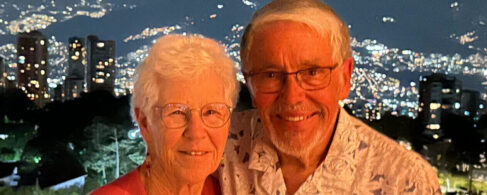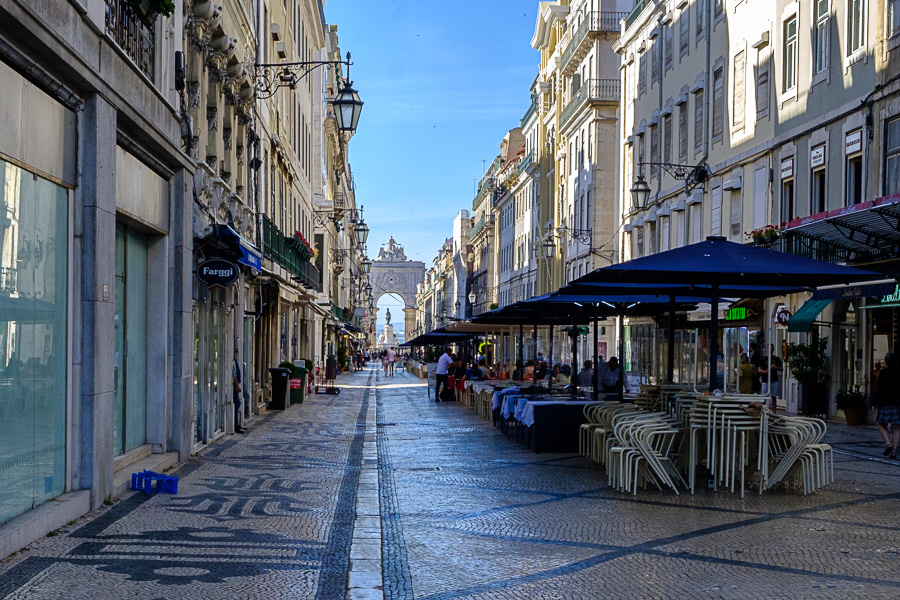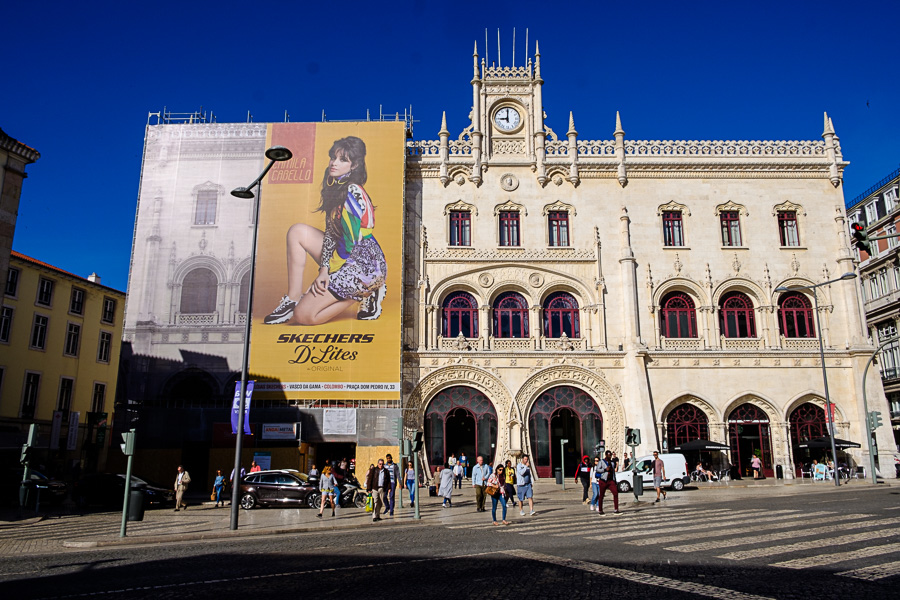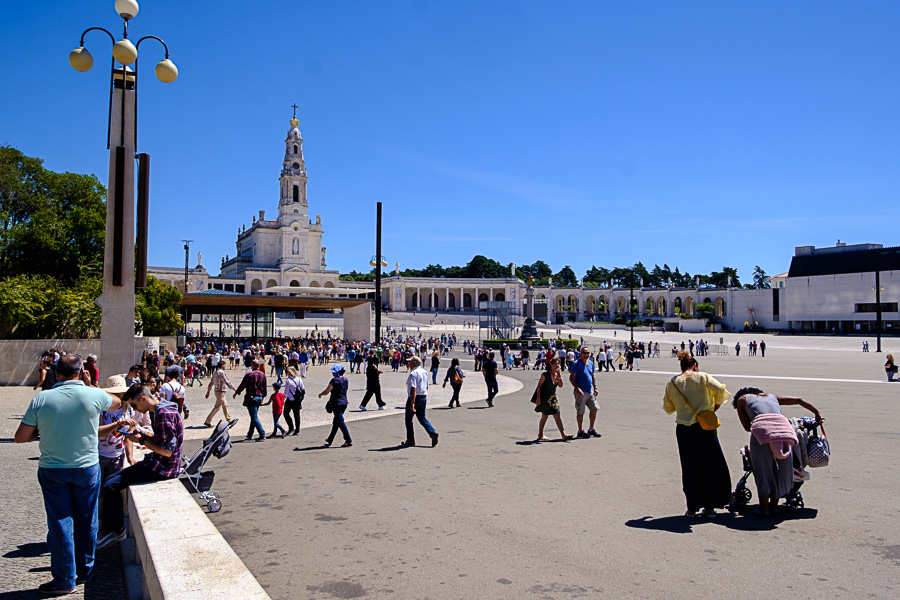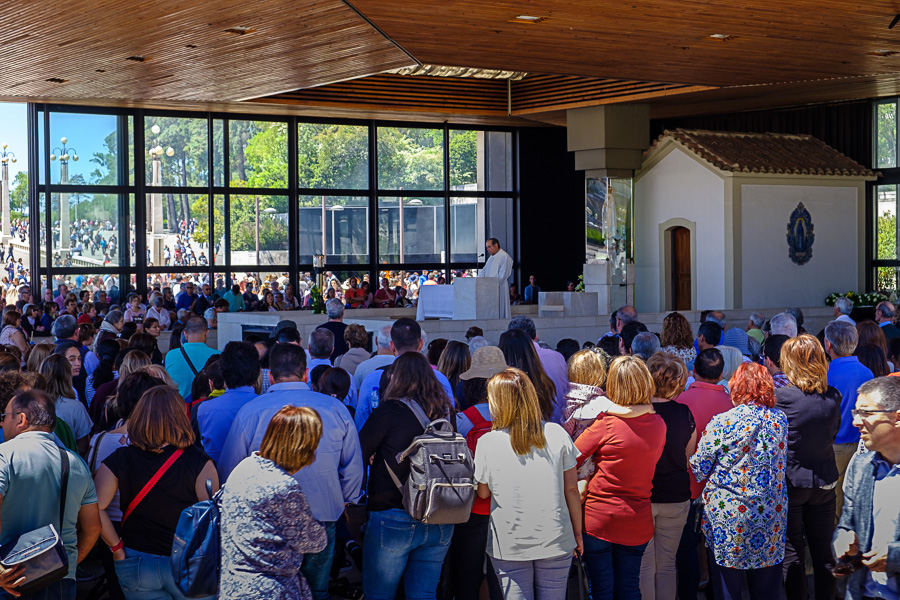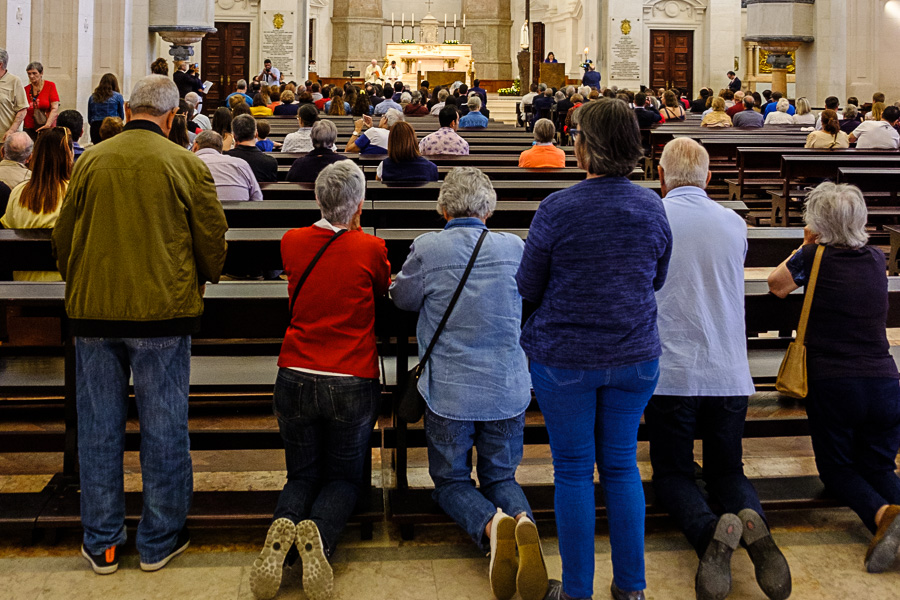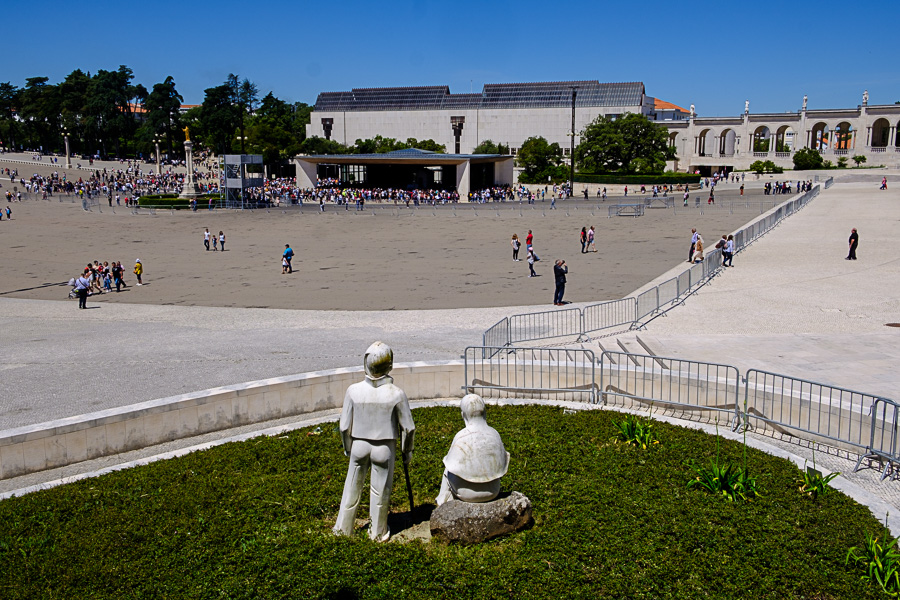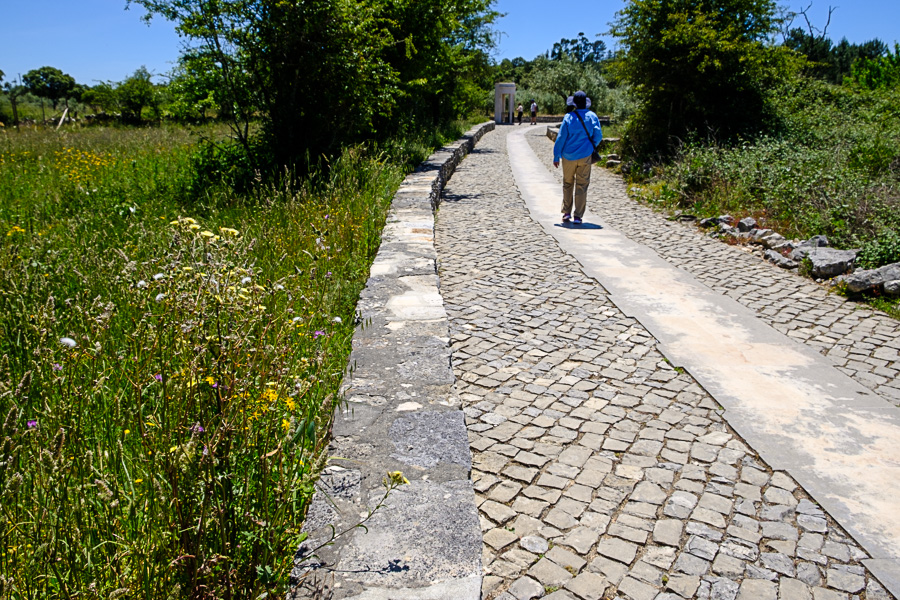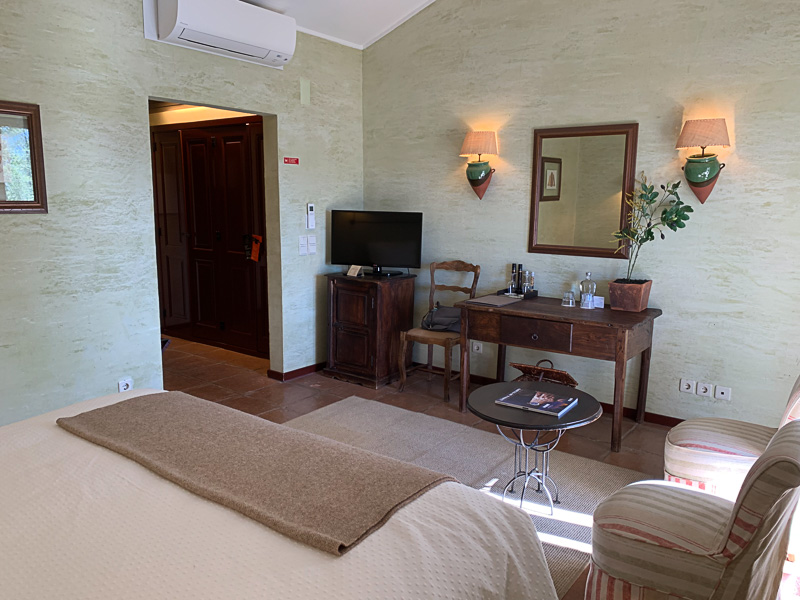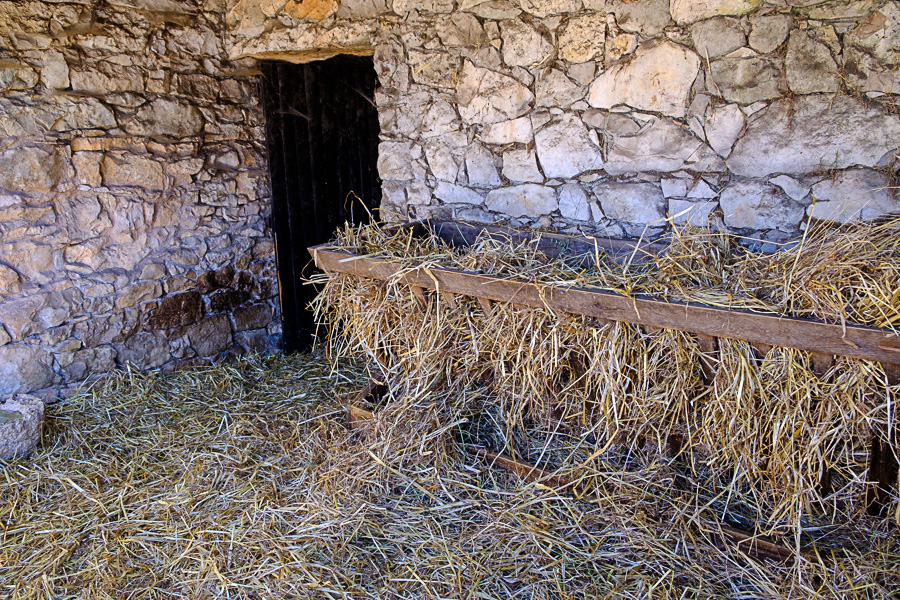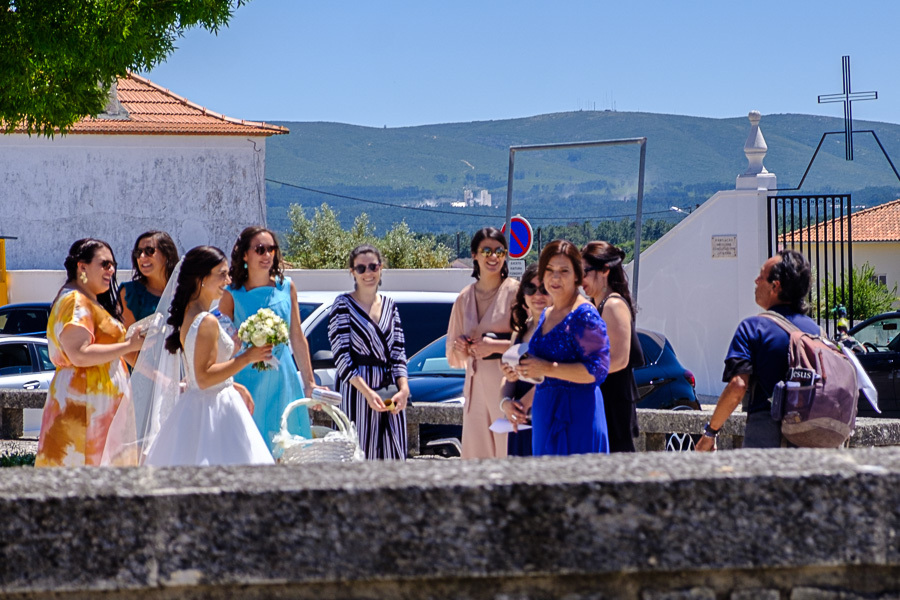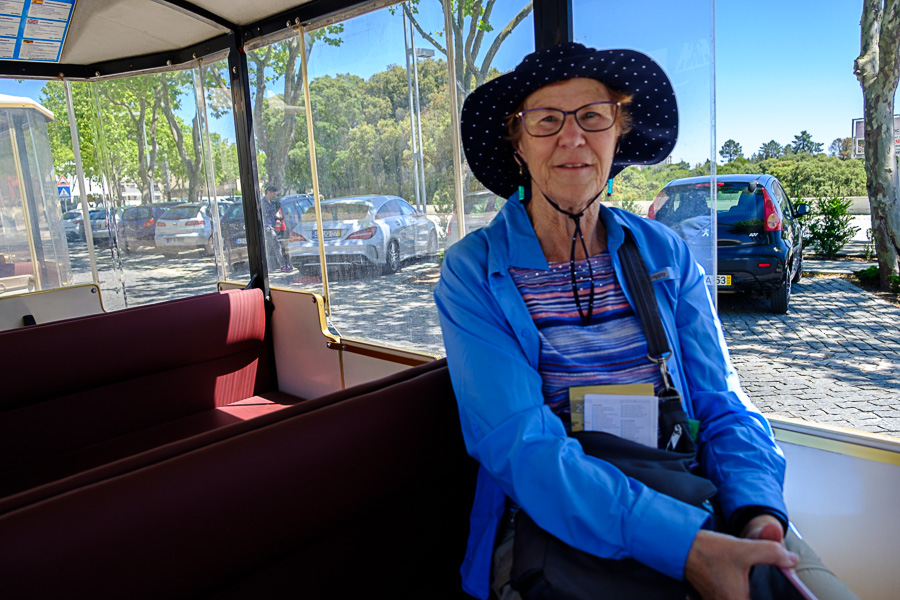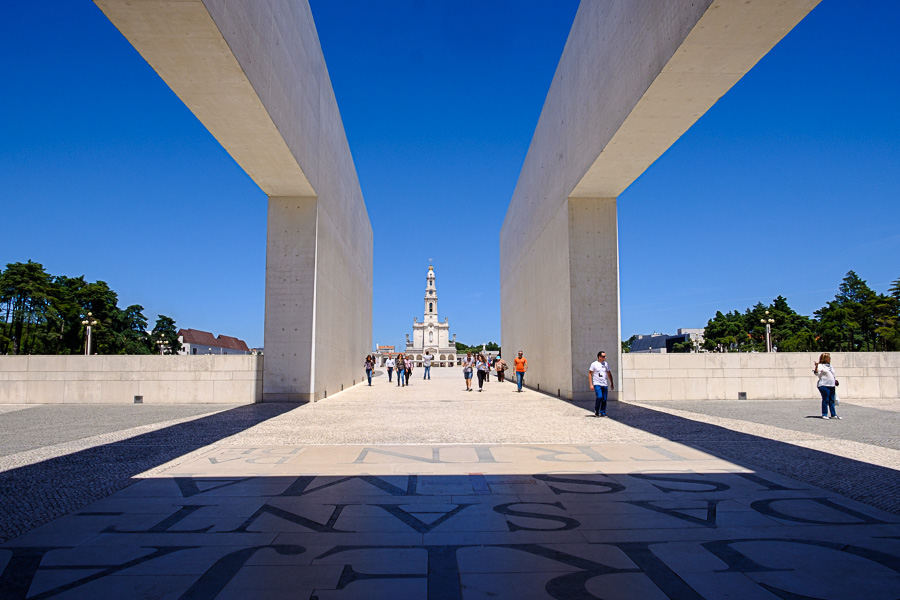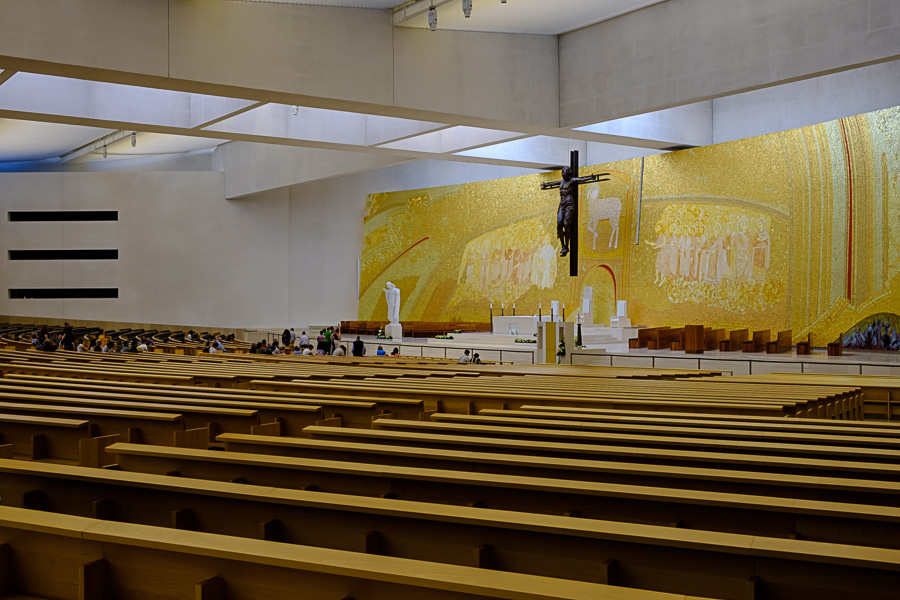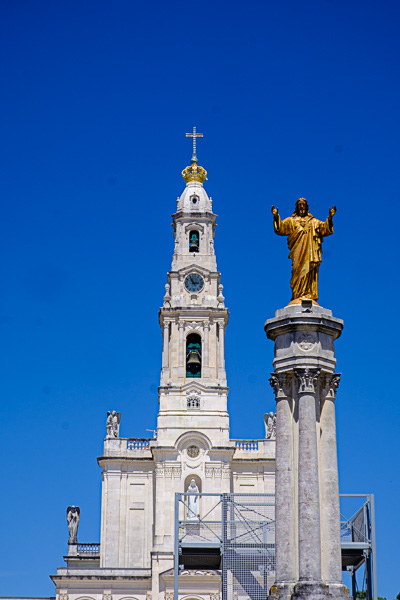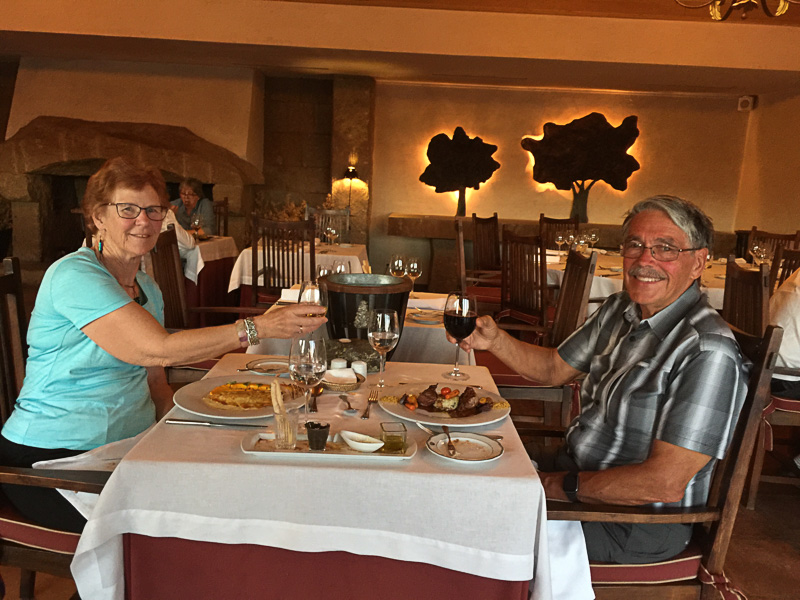The closest either of us has ever come to being Catholic was the 18 years we spent as a Minnesota Lutheran. Close, but no cigar. The liturgies bear a resemblance (we can hum along in a Catholic mass) and the doctrinal differences escape me. Martin Luther probably had an ax to grind back in the day but I forget the differences as soon as I learn them.
Which is to say we felt a bit out of school when we dropped in to Fátima to see what all the fuss is about. And fuss there is. The Sanctuary of Our Lady of Fátima is indeed an amazing complex of religious buildings and structures in the town of Fátima.
All of this came to be because a 10-year-old shepherd, Lucia de Jesus, and her two girl cousins, aged 9 and 7, tending their sheep on May 13, 1917, saw a blinding light that became a “Lady more brilliant than the sun.” The Lady, holding a rosary, told them that they must “pray much” and return to the same spot (Cova da Iris) on the 13thof the next five months at the same time. That they faithfully did, except for August. On August 13 a local administrator had called them away, so the Lady appeared to them on August 19 about a half mile from their home in Ajustrel. On the last day, October 13, about 70,000 people witnessed the apparition.
As I understand it, the Lady of Fátima urged the three young girls to pray often and strenuously for those who do not believe that they might be saved.
Here comes the really controversial part. Lucia, who became a nun at the age of 14, wrote in her memoir (actually her third memoir, written in 1941) that the Lady had revealed three secrets during the July 13 visit. Lucia revealed the first two: a description of Hell that would make Dante cringe and a prediction of World Wars I and II. She refused, at first, to reveal the third until her bishop commanded her to do so. The document was sent to the Vatican and finally released in 2000 by Pope John Paul II.
I hesitate to dive into the revelation contained in the third secret. When it was released the Vatican issued a statement (according to Wikipedia) that the secret described by Lucia “implied that the secret was about the 20th century persecution of Christians that culminated in the failed Pope John Paul II assassination attempt on May 13, 1981, the 64th anniversary of the first apparition of the Lady at Fátima.”
Sister Lucia died in 2005. Pope Benedict XVI approved expediting the diocesan phase of canonization for St Lucia (along with Mother Terresa and John Paul II), which was completed in 2017, leading to the probable completion of the canonization process sometime in the future.
The Fátima story has created no end of controversy, especially the three secrets part. Conspiracy theorists, parsing each word, can create an untold number of interpretations of the secrets. Others point to discrepancies that invalidate the whole story. The Catholic Church has, it appears to me, walked a thin line between endorsing Lucia’s account and keeping the faithful from extending Lucia’s story too far.
Pope John Paul II was a believer: he credited Our Lady of Fátima with guiding the path of the bullet that narrowly missed his heart during the attempted assassination. He had the bullet embedded in the crown now adorns the statue of Our Lady of Fátima.
Cardinal Ratzinger (later Pope Benedict XVI) summed up his reading of the third secret by saying (Wikipedia): “What remains was already evident when we began our reflections on the text of the ‘secret’: the exhortation to prayer as the path of ‘salvation for souls’ and, likewise, the summons to penance and conversion.”
So what’s a Minnesota Lutheran to make of all this? Do I believe or do I disbelieve the visions of a 10-year-old, reported 30 years after the fact?
Beats me.
Having visited the site, having seen the breathtaking structures constructed on the very field where Lucia and her cousins fed their flock, and especially having seen the obvious devotion, piety, attornment and belief of the hundreds of faithful there today, it doesn’t matter whether Lucia’s words are true or not. I have to agree with Cardinal Ratzinger: Her words have had a tremendous positive outcome for the faithful.
Travelogue wise, Judy and I toured the site (see the pictures). We didn’t see everything; that would take days. We also walked a mile or more to the village of Ajustrel where Lucia and her cousins lived. Her home is preserved as are the olive groves and fields around the town. The town itself is a quaint little village lined, as you might expect, with an array of trinket shops. It was a peaceful and enjoyable stroll.
The whole experience was unexpectedly uplifting. We had another upper 70s clear blue-sky day, as we’ve come to expect. And seeing people of all shapes and sizes proceeding on their knees from one end of Fátima to the other was truly inspiring.
We checked out our Sixt rental car about 9:30 after a thirty-minute walk from our hotel, dragging suitcases and ourselves along Lisbon’s mosaic stone sidewalks – what a clatter our roller bags made! Fátima was about an hour and a half and Belmonte another two hours. The A1 and A3 are very fine motorways, just like I75 (70 mph) with service areas every 25 miles or so. Couldn’t ask for better. The country side composed rolling hills and small mountains (no snow-capped peaks; the summits didn’t even break the timber line.
We’re staying in a Pousada – the Convento de Belmonte – which is, as the name suggests, a former convent made over into a swanky hotel. It comes complete with a swanky gourmet restaurant where we ate tonight. This presents good news/bad news/good news: we had a great meal – Sea bass for Judy, wild boar for me with assorted wild mushrooms to start and crème Brule to end. Judy polished off a half bottle of green wine (OK, I helped) and I had a generous pour of a Portuguese red whose name I promptly forgot. That’s the good news. The bad news is that we’re stuffed and a bit tipsy – a lot tipsy, truth be told.
The good news is that I’m so far gone I can’t type any further. All I can say is that if they rouse us out at 2 AM to sing matins I’m going to write up a really nasty note on tripadvisor.com.
Tomorrow: exploring old small towns of central Portugal, whatever that turns out to be.
